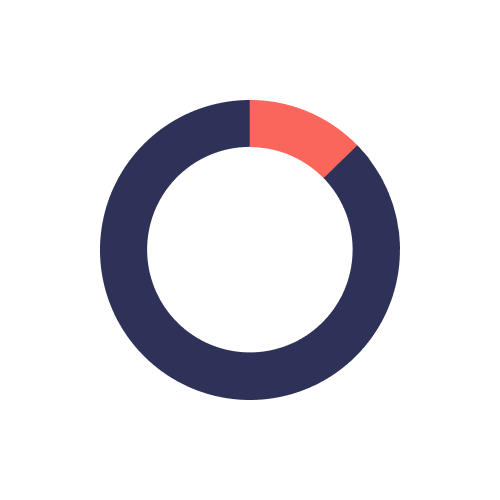Top Application Security Tools Softwares
Application Security software is crucial in safeguarding applications against threats and vulnerabilities. This category of software identifies, manages, and mitigates various security risks that applications might face during their lifecycle. Companies use it to ensure that their systems are protected from data breaches, unauthorized access, and other security threats. By integrating these tools ... Read More
43 companies found
Product Description
Kaspersky is a trusted name when it comes to digital security. For organizations looking for reliable, easy-to-use protection, Kaspersky offers a comprehensive suite of solutions tailored to keep data and operations safe. With decades of experience in the cybersecurity field, they have made it their mission to help businesses stay secure without complicating their day-to-day activities. One of th... Read More
Users
- • No Data
Industries
- • No Data
Market Segment
- • No Data
Product Description
Veracode offers a practical solution to ensure the security of your software applications. As businesses increasingly rely on software for their day-to-day operations, it's crucial to keep these applications protected from vulnerabilities that could lead to serious breaches. Veracode takes on this challenge by providing tools that help developers and security teams identify and fix potential secur... Read More
Users
- • No Data
Industries
- • No Data
Market Segment
- • No Data
Product Description
Snyk is a software designed to help businesses improve the security of their applications. Focusing primarily on developers, Snyk offers tools that easily integrate into the development process to find and fix vulnerabilities in your code, open source libraries, containers, and infrastructure as code. What sets Snyk apart is its developer-centric approach, making security feel like a natural part ... Read More
Users
- • No Data
Industries
- • No Data
Market Segment
- • No Data
PVS-Studio
Product Description
PVS-Studio is a versatile and practical software solution designed to help developers identify and fix code errors within their applications. As a Software as a Service (SaaS) offering, PVS-Studio operates seamlessly within the cloud, allowing teams and individuals to access its powerful tools without the need for complex installations or maintenance. The main purpose of PVS-Studio is to make the... Read More
Users
- • No Data
Industries
- • No Data
Market Segment
- • No Data
Product Description
SonarQube is an essential tool for anyone looking to maintain the quality and security of their software projects. Ideal for development teams, SonarQube helps catch bugs and vulnerabilities early on, which saves time and reduces the risk of defects in production. It functions as a continuous inspection tool, meaning it works alongside your development process, checking your code automatically so ... Read More
Users
- • No Data
Industries
- • No Data
Market Segment
- • No Data
GitGuardian
Product Description
Understanding the importance of security in a digital world, GitGuardian is dedicated to protecting your company's sensitive information. With so much of today's business operations relying on code, there's always a risk involved. GitGuardian is designed to keep your secrets safe, functioning as a vigilant guard for any vulnerabilities that may exist in your software. At its core, GitGuardian con... Read More
Users
- • No Data
Industries
- • No Data
Market Segment
- • No Data
Product Description
Kiuwan is a software-as-a-service platform designed to help businesses improve their applications from a security and quality standpoint. With Kiuwan, developers and project managers can seamlessly integrate security checks and code quality assessments into their application development lifecycle. This platform aims to provide a comprehensive, straightforward way for businesses to ensure their sof... Read More
Users
- • No Data
Industries
- • No Data
Market Segment
- • No Data
Product Description
BKP365 is your reliable partner when it comes to keeping your company's data safe and sound. It’s designed with simplicity and efficiency in mind, making it a hassle-free option for businesses big and small. No need to worry about losing important information with BKP365 – it ensures that your data is always backed up and ready to restore if anything goes wrong. Think of BKP365 as your digital sa... Read More
Users
- • No Data
Industries
- • No Data
Market Segment
- • No Data
Product Description
Daito is designed to streamline how businesses manage their projects and collaborate with team members. It's built for small and medium-sized businesses that need an affordable yet powerful tool to keep all their tasks, files, and communications in one place. With Daito, everyone on your team can see what needs to be done, who’s working on what, and how much progress has been made. One of the key... Read More
Users
- • No Data
Industries
- • No Data
Market Segment
- • No Data
Codified Security
Product Description
Codified Security aims to simplify the process of securing your mobile applications and APIs. As businesses increasingly rely on mobile solutions, safeguarding sensitive information without the hassle can be challenging. That's where Codified Security steps in. Our software is designed to identify and solve potential security issues in your apps quickly and efficiently. Instead of spending count... Read More
Users
- • No Data
Industries
- • No Data
Market Segment
- • No Data
What is application security software used for?
Purpose and Functionality
Application Security software is crucial for safeguarding software applications from security threats throughout their lifecycle. It serves the primary purpose of identifying, fixing, and preventing vulnerabilities in applications. By conducting rigorous security assessments, it helps organizations protect sensitive data and ensure their software's integrity, confidentiality, and availability.
Vulnerability Identification
One of the core functions of Application Security software is to identify vulnerabilities. These vulnerabilities can expose applications to risks such as unauthorized access or data breaches. This software scans source code, binary files, and application settings to detect potential weaknesses. By doing so, it complements traditional security measures like firewalls and intrusion detection systems, which often fall short in protecting against application-specific threats.
Threat Prevention
Another vital role of Application Security software is threat prevention. It helps mitigate risks by monitoring and controlling application behavior. Implementing security policies, such as input validation and access management, prevents malicious actions from taking advantage of application vulnerabilities. This proactive approach is essential for minimizing the risk of exploitation.
Compliance Assurance
Application Security software assists organizations in meeting compliance requirements. Various regulations, such as GDPR, HIPAA, and PCI DSS, mandate thorough application security practices. These standards require robust safeguards for personal and financial data. By integrating security measures into the application development process, Application Security software ensures that organizations comply with relevant regulations and avoid potential legal issues.
Development Cycle Integration
An important aspect of Application Security software is its integration into the software development cycle. This software supports DevSecOps practices, enabling security considerations to be part of the development pipeline from the start. Continuous integration of security measures facilitates early detection of vulnerabilities, making remediation less costly and more efficient compared to addressing issues post-deployment.
Risk Reduction
Application Security software contributes significantly to risk reduction. By providing detailed reports and analytics, it enables organizations to understand the security posture of their applications. These insights help prioritize remediation efforts, focusing resources on the most critical vulnerabilities. Consequently, businesses can minimize risks that could otherwise lead to financial losses or reputational damage.
Code Quality Enhancement
By analyzing code for security flaws, Application Security software also enhances overall code quality. It encourages best practices and clean coding standards, which not only improve security but also contribute to application maintainability and performance. This dual benefit is indispensable for long-term software reliability.
Conclusion
Overall, Application Security software plays a critical role in protecting software applications from a wide range of security threats. Its functions, from vulnerability identification and threat prevention to compliance assurance and risk reduction, are essential for modern applications. By integrating security throughout the development lifecycle, it not only safeguards data but also supports innovation and agility in software development.
How does Application Security software help protect data?
Application Security software plays a crucial role in safeguarding data. It involves various tools and practices designed to protect applications from security threats, ensuring data integrity and confidentiality. Here’s how such software helps protect data:
1. Threat Detection and Mitigation
Application Security software continuously monitors applications to detect anomalies and potential threats. By identifying vulnerabilities, it mitigates risks before they can be exploited. This proactive approach helps prevent unauthorized access and data breaches, safeguarding sensitive information.
2. Vulnerability Management
These tools regularly scan applications for known vulnerabilities. When vulnerabilities are identified, the software suggests or implements patches to fix them. By closing security gaps, Application Security software ensures that data remains protected from exploit attempts.
3. Access Control
Application Security software enforces robust access control measures. It ensures that only authorized users can access sensitive data. Multi-factor authentication and role-based access control are common features that help in verifying identities and restricting unauthorized data access.
4. Encryption
Encryption is a fundamental feature of Application Security software. By encrypting data both in transit and at rest, it prevents unauthorized parties from reading sensitive information, even if the data is intercepted. This ensures that data privacy is maintained throughout its lifecycle.
5. Security Testing
Application Security software often includes automated security testing tools. These tools perform static, dynamic, and interactive application security testing (SAST, DAST, and IAST) to identify security flaws. By continuously testing and improving the security posture, data remains well-protected.
6. Compliance Enforcement
Regulatory compliance is critical in application security. Application Security software helps organizations comply with data protection regulations by ensuring security measures are up-to-date. By doing so, it provides frameworks for protecting data and avoiding legal consequences.
7. Logging and Monitoring
Continual monitoring and logging are core functions. These tools create audit trails through real-time monitoring and logging of user activities. This process helps in identifying suspicious activities, allowing for quick response to potential security incidents, thus protecting sensitive data from breaches.
8. Application Hardening
Application Security software assists in hardening applications. It involves removing unnecessary functions, closing open ports, and securing configurations. These steps make it harder for attackers to exploit the application, thus securing the underlying data.
9. Data Leak Prevention
By using Application Security software, organizations can prevent data leaks. These tools identify and block illicit data transfers and fortify the perimeter against data loss, ensuring that corporate and customer data doesn't end up in the wrong hands.
10. Protecting Against Web-Based Attacks
Web applications are particularly prone to attacks. Application Security software safeguards against common threats such as SQL injection, cross-site scripting, and cross-site request forgery. By protecting against these threats, it ensures the confidentiality and integrity of the data within web applications.
In summary, Application Security software provides comprehensive protection strategies to safeguard data. By identifying and rectifying vulnerabilities, enforcing strict access controls, and employing encryption, it plays a pivotal role in ensuring data security.
What are common features of Application Security software?
Vulnerability Scanning
Application Security software frequently offers vulnerability scanning. This feature inspects code and applications for potential vulnerabilities. By scanning codebases, these tools identify weaknesses that hackers might exploit. The scanning process helps developers patch vulnerabilities before they reach production environments.
Security Testing
Security testing tools simulate attacks on applications to identify weak points. This feature encompasses various testing types, including penetration testing and dynamic analysis. It helps evaluate an application's resilience to attacks, ensuring potential threats are identified and mitigated.
Code Analysis
Application Security software often includes static and dynamic code analysis. Static analysis scrutinizes code without executing it, while dynamic analysis evaluates running applications. This feature helps in detecting bugs and vulnerabilities, ensuring code integrity and security policies are enforced.
Threat Detection
Detecting emerging threats is crucial to maintaining application security. Threat detection features monitor applications for unusual activity or breaches. These tools use algorithms and signatures to identify potential threats in real-time, allowing quick response to potential security incidents.
Application Firewall
A Web Application Firewall (WAF) is a standard feature in Application Security software. WAFs monitor and filter traffic between the application and external entities. They protect applications from common web exploits such as SQL injection, cross-site scripting (XSS), and other Vulns OWASP Top Ten threats.
Compliance Management
Ensuring compliance with standards and regulations is crucial in application security. Compliance management features help monitor and assess adherence to regulatory requirements such as GDPR, HIPAA, and PCI-DSS. These tools generate compliance reports and alerts for non-conformity, facilitating better governance.
Access Control
Access control features manage who can view or manipulate application resources. By implementing role-based access controls, organizations restrict access based on user roles, ensuring that only authorized individuals can perform critical functions, minimizing the risk of insider threats.
Encryption
Encryption features protect sensitive data within applications. By encrypting data in transit and at rest, Application Security software ensures unauthorized users cannot access confidential information, safeguarding privacy and maintaining data integrity.
Incident Management
Incident management features provide a centralized platform for handling security incidents. This includes logging incidents, tracking incident response activities, and coordinating recovery efforts. These features streamline how organizations handle security breaches, ensuring swift resolution and minimizing the impact on operations.
Patch Management
Keeping applications updated is crucial for security. Patch management features automate the deployment of security patches and updates. By managing patches efficiently, these tools help prevent vulnerabilities related to outdated software, ensuring applications remain secure against the latest threats.
Integration Capabilities
Seamless integration with other tools is vital for Application Security software. Integration capabilities allow these tools to work alongside development, DevOps, and other security solutions, ensuring a streamlined workflow. This interoperability facilitates a holistic approach to application security, fostering collaboration and efficiency.
Logging and Monitoring
Logging and monitoring features are essential for tracking application activity. These tools log user actions, access events, and errors, providing detailed information for analysis. Continuous monitoring enables real-time visibility into application performance, helping detect anomalies swiftly.
Application Security software includes numerous features aimed at safeguarding applications and data. These features assist organizations in protecting their software from potential threats while ensuring compliance and operational efficiency.
How does application security software identify vulnerabilities?
Application Security software is designed to enhance the safety of software applications by identifying and mitigating vulnerabilities. The detection of these vulnerabilities is crucial for maintaining robust application security. This software uses various techniques and tools to find potential weak points in applications before they can be exploited.
Static Analysis
Application Security software often employs static analysis, which involves examining the application's source code, binaries, or bytecode without executing the program. By analyzing code structures, control flow, and data flow, this method detects vulnerabilities such as buffer overflows, injection flaws, and insecure API usage. Static analysis is beneficial because it can identify issues early in the development cycle, allowing developers to address them before deployment.
Dynamic Analysis
Dynamic analysis involves executing the application and interacting with it in a testing environment to identify vulnerabilities. This method allows for real-time detection of security flaws by observing the application's behavior during execution. Application Security software conducts automated testing against known attack vectors, including SQL injection, cross-site scripting (XSS), and other runtime vulnerabilities. It is effective in finding issues that might not be visible through static analysis alone.
Interactive Application Security Testing (IAST)
IAST combines elements of both static and dynamic analysis by monitoring the application continuously from within the execution environment. It provides detailed insights into how data moves through the application, identifying potential vulnerabilities as they occur in real-time. Application Security software using IAST can offer more precise information about the location and nature of vulnerabilities.
Software Composition Analysis (SCA)
Application Security software also utilizes Software Composition Analysis (SCA) to inspect third-party components and open-source libraries integrated into applications. Many applications use third-party code, which can introduce vulnerabilities if not properly vetted. SCA tools identify outdated or vulnerable components, check for licensing issues, and suggest updates or replacements, mitigating risks associated with external dependencies.
Threat Modeling
Threat modeling is another strategy employed by Application Security software, allowing for the identification of possible vulnerabilities by simulating potential attack scenarios. This method helps in understanding how an attacker might exploit vulnerabilities in an application. By modeling these threats, developers can proactively address security concerns.
Machine Learning and AI
Application Security software increasingly incorporates machine learning and AI techniques to enhance vulnerability identification. These technologies enable the software to learn patterns of known vulnerabilities, detect anomalies, and predict potential security threats more efficiently. Machine learning algorithms can improve over time, identifying new vulnerabilities as they emerge.
Security Testing Frameworks
Many Application Security software packages integrate security testing frameworks, which include predefined test cases and methodologies to uncover vulnerabilities. These frameworks guide the software through various scenarios to determine how the application behaves under different conditions, highlighting potential weaknesses.
Each of these methods contributes to a comprehensive approach to vulnerability detection in Application Security software. By employing a combination of static and dynamic techniques, along with advanced technologies like AI and SCA, these tools provide vital insights into an application's security posture.
Why is application security software important for businesses?
Protection Against Cyber Threats
Application Security software plays a crucial role in safeguarding applications from cyber threats. In the digital landscape, applications are prime targets for cybercriminals, who aim to exploit vulnerabilities for malicious purposes. Application Security software identifies and mitigates these vulnerabilities before they can be exploited. By securing applications, businesses can prevent data breaches, financial loss, and reputational damage, ensuring the integrity and confidentiality of sensitive information.
Ensuring Compliance
Many industries are subject to strict regulatory standards regarding data protection. Application Security software helps businesses comply with regulations such as GDPR, HIPAA, and PCI-DSS. Failure to adhere to these regulations can result in heavy fines and legal consequences. Application Security software provides tools to ensure that applications meet compliance requirements, maintaining data security and privacy. This proactive approach to security not only avoids legal issues but also builds trust with customers and stakeholders.
Safeguarding Customer Data
Protecting customer data is paramount for building trust and maintaining a positive brand image. Application Security software ensures that customer information is handled securely, safeguarding against unauthorized access and data leaks. Enhancing data protection measures not only increases customer confidence but also strengthens relationships, leading to potential business growth and customer loyalty. Businesses that prioritize Application Security software demonstrate a commitment to customer privacy and security.
Preventing Financial Loss
Cybersecurity incidents can lead to significant financial losses through direct costs, such as theft or ransom payments, and indirect costs, like downtime and loss of productivity. Application Security software reduces the risk of these incidents occurring by identifying vulnerabilities at an early stage. By preventing breaches, businesses can avoid the financial impact of cyber attacks, saving their resources for growth and development. Investing in Application Security software is often more cost-effective than dealing with the aftermath of security incidents.
Enhancing Development Processes
Integrating Application Security software into the development lifecycle enhances the overall quality and security of software applications. Security testing becomes part of the development process, identifying issues early and reducing the complexity of post-production fixes. This results in more robust applications that are less vulnerable to attacks. Additionally, integrating Application Security software can improve collaboration between development and security teams, fostering a culture of shared responsibility for security throughout the business.
Protecting Intellectual Property
Businesses rely heavily on their intellectual property (IP) for competitive advantage. Application Security software safeguards this intellectual property from unauthorized access and theft. Securing applications ensures that proprietary technology, trade secrets, and business strategies are protected against competitors and malicious actors. By preserving IP, businesses maintain their market position and continue to innovate without the risk of valuable information being compromised.
Maintaining Brand Reputation
A security breach can significantly harm a brand's reputation, leading to loss of customer trust and potential business loss. Application Security software mitigates these risks by ensuring that applications are developed and maintained securely. Customers are more likely to trust a brand that demonstrates a commitment to protecting their data, leading to increased customer retention and a positive market perception. By preventing breaches, businesses safeguard their reputation and preserve their brand value.
What are the benefits of using application security software in a cloud environment?
Enhanced Protection
Application Security software plays a crucial role in safeguarding applications hosted in cloud environments. As cloud systems are accessible over the internet, they pose potential security risks. This software provides robust protection against various cyber threats, ensuring that applications remain secure from unauthorized access, data breaches, or malware attacks.
Real-time Threat Detection
One of the key advantages of Application Security software in the cloud is real-time threat detection. The software continuously monitors applications for suspicious activities, allowing for immediate identification of threats. This timely detection is vital for mitigating risks before they escalate into significant security breaches.
Automated Security Processes
Application Security software automates many security processes, reducing the reliance on manual intervention. Automation facilitates faster responses to potential threats and vulnerabilities. By addressing security issues promptly, potential impacts on application performance and data integrity are minimized.
Scalability and Flexibility
Cloud environments are inherently scalable and flexible, and Application Security software complements these characteristics. As your cloud applications grow, the software scales to accommodate increased security needs. This ensures sustained protection without frequent manual adjustments, thereby maintaining the efficiency and security of large dynamic environments.
Vulnerability Management
Application Security software is instrumental in identifying and managing vulnerabilities within applications. By scanning applications regularly, it helps in prioritizing patches and updates based on potential threat levels. This proactive approach to vulnerability management is essential for maintaining the integrity and reliability of applications.
Data Protection and Privacy
In cloud environments, ensuring data protection and privacy is paramount. Application Security software implements encryption and access controls to safeguard sensitive data. These features help in adhering to compliance regulations and protecting the privacy of users and their data in cloud-based applications.
Enhanced Compliance
Compliance with industry regulations is a significant concern for organizations using cloud applications. Application Security software aids in meeting regulatory requirements by providing necessary security controls and documentation. This ensures that applications comply with standards, thereby avoiding potential legal issues and penalties.
Cost Efficiency
While implementing Application Security software requires an initial investment, the long-term cost benefits are substantial. By preventing data breaches and security incidents, organizations can avoid expensive remediation costs. Additionally, automated security processes reduce the need for extensive human resources, further contributing to cost savings.
Integration Capabilities
Application Security software often integrates seamlessly with other cloud services and tools, enhancing existing security frameworks. These integrations streamline security operations and create a cohesive security ecosystem, ensuring consistent protection across all applications.
Improved User Trust
By employing Application Security software, organizations can enhance user trust. When users are assured that their data and interactions are secure, it positively affects their perception and confidence in the application. This trust is vital for customer retention and satisfaction.
Continuous Monitoring and Updates
Application Security software provides continuous monitoring and regular updates to defend against emerging threats. The dynamic nature of cloud environments necessitates constant vigilance, which this software ensures through up-to-date defenses and automatic updates.
How does application security software integrate with other security tools?
Integration with Network Security Tools
Application Security software often interacts with network security tools to offer a holistic defense against threats. This integration ensures that vulnerabilities detected within an application can be cross-referenced with network activity. The information exchange between these tools helps in constructing robust security protocols that combat potential network breaches and application-level infiltrations simultaneously.
Collaboration with Endpoint Security Solutions
Integrating with endpoint security solutions, such as antivirus software and malware detectors, enhances the capability of Application Security software to protect sensitive data. This collaboration enables real-time monitoring and prompt action when an endpoint device tries to interact with an application. Alert sharing and threat intelligence exchange facilitate a coordinated defense mechanism against attacks focusing on end-user devices.
Compatibility with Security Information and Event Management (SIEM) Systems
Application Security software often feeds its insights and data into SIEM systems. This integration is crucial for aggregating security alerts and logs across a system's infrastructure. By sharing detailed vulnerability assessments and incident reports, Application Security software empowers SIEM systems to provide a comprehensive view of an organization’s security posture and streamline issue prioritization and threat response.
Integration with Identity and Access Management (IAM)
By working closely with IAM solutions, Application Security software ensures that unauthorized access is minimized. It provides crucial data allowing IAM systems to adjust permissions and authenticate identities based on detected application vulnerabilities or unusual access patterns. This synergy enhances both security and efficiency in role-based access control and policy implementation.
Synergy with Cloud Security Platforms
As many organizations migrate to the cloud, the need for Application Security software to integrate with cloud security tools becomes paramount. These integrations ensure that applications are secure whether they are deployed on-premise or in the cloud. Cross-platform coordination helps in addressing unique threats associated with cloud environments like data breaches or cloud-native application issues.
Coordination with Vulnerability Management Tools
Application Security software frequently works with vulnerability management solutions to improve patch management and prioritize security tasks. By providing a detailed analysis of identified application vulnerabilities, it aids in the effective distribution and deployment of patches, ensuring vulnerabilities are addressed promptly.
Integration with DevSecOps Tools
Incorporating security into the DevOps lifecycle, Application Security software can link with DevSecOps tools to automate security testing and vulnerability detection early in the development process. Integrated security protocols facilitate continuous monitoring and testing, enabling rapid identification and resolution of security issues during the development lifecycle, thereby enhancing the security posture from the onset of application design.
These integrations are fundamental in providing a unified security strategy for protecting enterprise applications. Each connection—be it with SIEM, IAM, or cloud platforms—reinforces the ability of Application Security software to defend applications effectively and adaptively within diverse IT environments.









